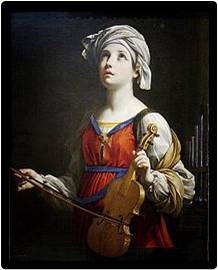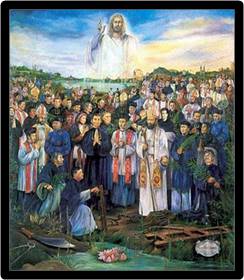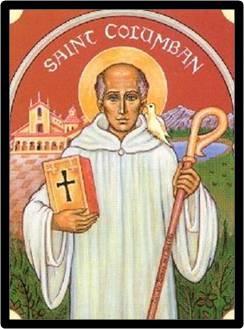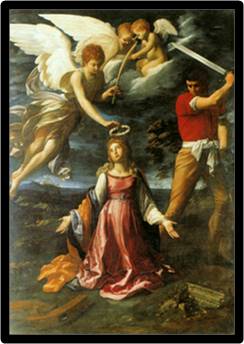NOVEMBER 22 - ST. CECILIA

Cecilia was a Roman noblewoman who had given her heart to Christ. Under the rich clothes worn by women of high class, Cecilia wore a rough shirt that caused her suffering. She wanted to be able to offer this sacrifice to Jesus, whose bride she intended to be.
But Cecilia’s parents gave her in marriage to a young pagan noble, Valerian of Trastevere. Celia is considered the patroness of music because during the wedding celebration, the lovely bride sat apart, singing a hymn of love to God in her heart and praying for his help.
When she and Valerian, her husband, were alone, she gathered up courage and said to him: “I have a secret to tell you. You must know that I have an angel of God watching over me. If you let me keep my promise to be Christ’s bride only, my angel will love you as he loves me.”
Valerian was surprised and said kindly, “Show me this angel. If he comes from God, I will do as you wish.”
Cecilia said, “If you believe in the one true God and receive the waters of Baptism, then you will see my angel.” Valerian went to Bishop Urban and was received with joy. After he had professed his belief in the Christian religion, he was baptized and returned to St. Cecilia. There by the saint’s side, the young man saw the splendid angel.
The angel placed a crown on each of their heads, and offered Valerian a favor and Valerian asked that his brother also be baptized.
Valerian’s brother, Tiburtius, learned of the Christian faith from Cecilia. She spoke so beautifully of Jesus that before long, he too was baptized. Together the two brothers performed many works of charity and mercy, like burying dead Christian martyrs.
When they were arrested for being Christians, they went bravely to death rather than give up their new faith in Jesus. St. Cecilia lovingly buried their bodies, before she too was arrested.
She even converted the officers who tried to make her sacrifice to false gods. When she was put into a fire, it did not harm her. Then they tried to suffocate her and finally, a man was sent to her house to behead her.
He struck her neck three times, but Cecilia did not die immediately. She lay on the floor unable to move. Yet by holding out three fingers of one hand, and one of the other, she still professed her belief in the Blessed Trinity.
When her tomb was opened about one thousand five hundred years later in Rome, her body was still found perfect and incorrupt.



